SaaS in 2025 isn’t just growing—it’s moving at hyperspeed. The global SaaS market is projected to skyrocket from $315.68 billion in 2025 to $1,131.52 billion by 2032[1], with a CAGR of 20%, and this growth isn’t just about numbers. It’s about smarter, AI-powered, and hyper-personalized platforms reshaping modern businesses’ operations.
Today’s SaaS isn’t limited to Zoom or iCloud. It’s fueling frontline operations in manufacturing, healthcare, finance, and retail, where real-time decisions, intelligent automation, and frictionless experiences aren’t perks, but table stakes.
Organizations are no longer just migrating to SaaS for cost efficiency. They’re betting on it for speed, scale, resilience, and winning. And behind every game-changing platform is a strategic SaaS product development approach that bridges user needs with business outcomes.
At Rishabh Software, we’ve helped forward-looking companies turn ideas into scalable, secure, and revenue-generating SaaS solutions—purpose-built for their industry and users.
In this blog, we unpack how to build a future-ready SaaS product—from idea to launch and beyond. Explore our proven development lifecycle, avoid common roadblocks, and discover what it takes to succeed in the SaaS game today.
Let’s get into it.
Why SaaS Product Development Matters More Than Ever in 2025
Choosing SaaS today isn’t just a strategic call—it’s a growth imperative. In 2025, SaaS products are no longer “nice-to-have” tools; they are now core infrastructure driving agility, innovation, and resilience across industries
With real-time AI, vertical specialization, and edge-ready architectures, SaaS has evolved into a business model that scales, adapts, and never stops learning from user behavior.
Here’s why SaaS based product development is your smartest play in 2025:
- It powers adaptive business models: In a market shaped by rapid change, SaaS enables businesses to shift gears quickly, from launching new features to entering new markets or changing pricing models.
- It unlocks recurring, predictable revenue: With usage-based billing and tiered plans becoming the norm, SaaS helps companies monetize more efficiently, turning customers into long-term revenue streams, rather than one-time buyers.
- It meets users where they are: Today’s users expect hyper-personalized, always-on experiences. SaaS products built with real-time analytics and AI can deliver tailored workflows, recommendations, and value across devices, anytime.
- It’s built for intelligence at the edge: Thanks to edge computing and AI integration, modern SaaS products are faster, smarter, and more context-aware, enabling decisions within milliseconds.
- It scales without the bloat: Microservices, serverless infrastructure, and low-code integrations mean your SaaS product can scale on demand, without burning through engineering or infrastructure budgets.
- Optimized Customer Acquisition: Freemium and trial-led onboarding still works, but in 2025, it’s enhanced with AI-driven personalization that reduces CAC and increases conversion from Day 1. In short, modern SaaS product development isn’t just about keeping up—it’s about building platforms that outlearn, outlast, and outpace the competition.
SaaS Product Development Process
Developing a SaaS product is an iterative journey. You need to cycle through thorough market research, talking to customers (a lot), selecting the right technology partner, and tech stack. The good part is that you can do this with AI-driven tools.
If it is still confusing for you, follow these key steps involved in SaaS product development that make your life easy.
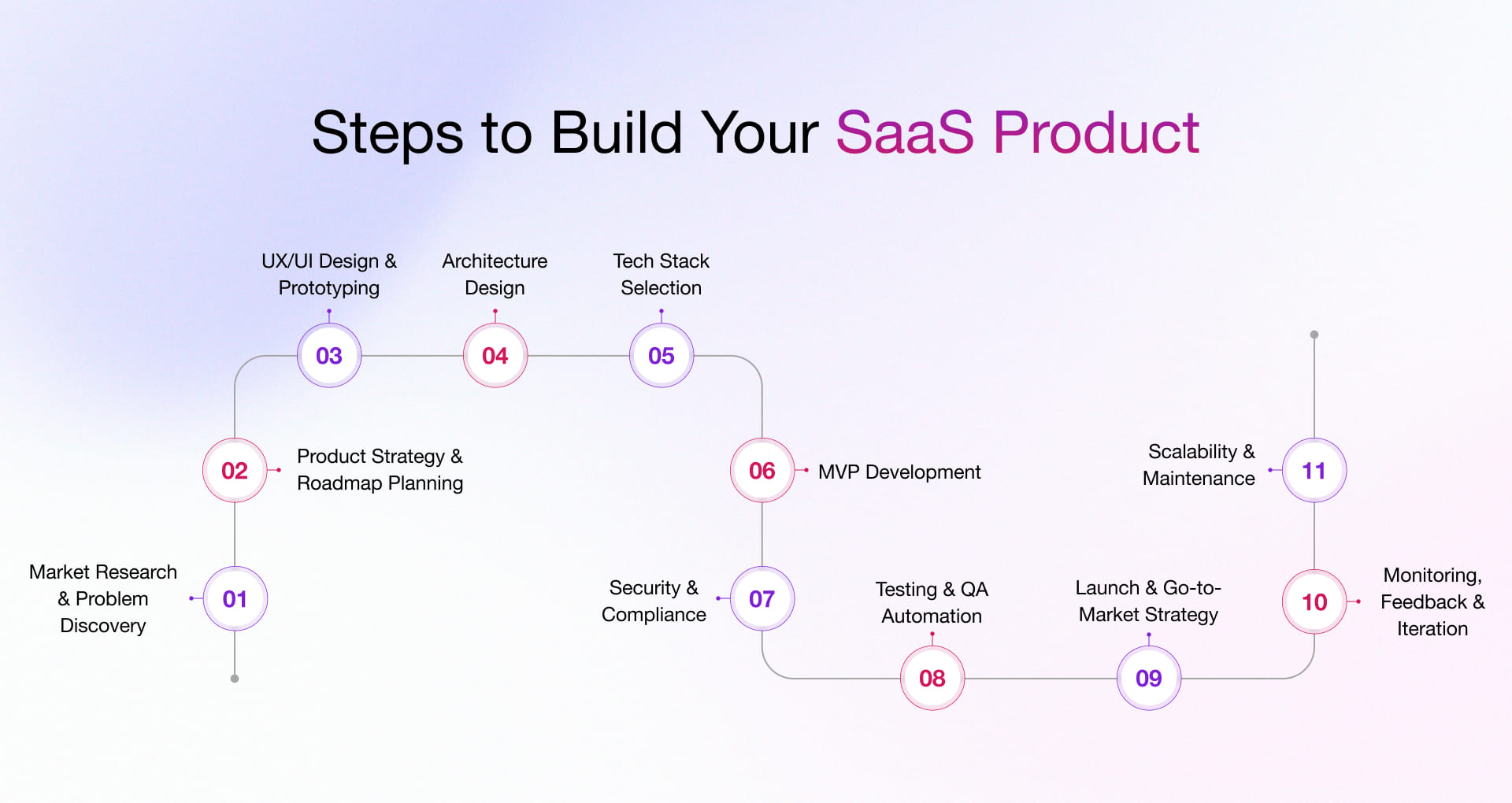
Step #1 Market Research & Problem Discovery
Every successful SaaS product starts with deeply understanding the customer’s pain points. Today, that understanding is driven by AI-powered research tools, behavioral analytics, and real-time market scanning.
Instead of relying on assumptions, product teams now tap into intent data, forums, review platforms, and social listening tools to identify patterns and unaddressed needs. Predictive insights and generative personas help map both current and emerging gaps.
Your goal: Solve a specific, validated problem that’s actively costing your target audience time, money, or peace of mind.
Step #2 Product Strategy & Roadmap Planning
This is where vision meets execution.
You don’t need a feature list. You need a strategy that translates user needs into meaningful outcomes. Begin by mapping core use cases to Jobs-To-Be-Done (JTBD) frameworks. Prioritize outcomes that deliver quick wins and long-term value.
Xero[2], a cloud-based accounting software, strategically planned its product roadmap to cater to small businesses. By focusing on user-friendly features and integrations, Xero expanded its user base significantly, demonstrating the importance of aligning product strategy with market needs.
Your roadmap should be dynamic, evolving with product telemetry and user behavior. AI can support backlog refinement, identify gaps in your feature set, and surface underutilized capabilities. Your roadmap should adapt, not age out.
Step #3 UX/UI Design & Prototyping
Design is no longer about color palettes and typography. It’s about flow, clarity, and reducing cognitive load.
Use AI-enabled tools to auto-generate wireframes, design systems, and even test variations based on engagement heuristics. Modern UX prioritizes personalization, accessibility, and intuitive onboarding. Micro-interactions and contextual guidance have become essential for PLG-driven growth.
Interactive prototypes can be shared and validated in real time, closing the loop between user input and design iteration. Design every screen with one objective: shorten the path to value.
Step #4 Architecture Design
Scalability and composability are baked into modern SaaS architecture. Monoliths have given way to modular, cloud-native setups with loosely coupled microservices.
Architect with APIs at the core. Use containers, service mesh frameworks, and event-driven design patterns to future-proof your application. Edge computing and serverless infrastructure reduce latency and improve resilience across regions.
Airbnb’s[3] tech stack includes Ruby on Rails for the backend and React for the frontend, enabling rapid development and scalability. Their choice of technologies delivers seamless user experiences and handles large-scale operations efficiently.
Whether you’re targeting B2B, B2C, or enterprise, your infrastructure should support high availability, zero-downtime updates, and multi-tenancy.
Step #5 Tech Stack Selection
Pick tools that grow with you, not weigh you down.
The 2025 SaaS stack is lean, flexible, and performance-obsessed. Think of modular tech, API-first services, and edge computing for latency-sensitive operations.
Here are some go-to stack options:
- Frontend: Next.js, React, Svelte
- Backend: Node.js + Edge Functions, FastAPI, or Go
- DB: PostgreSQL + PlanetScale (serverless), or Fauna
- Infra: AWS Lambda, Vercel, or Azure Functions
New in 2025:
- Stack integrations with generative AI (e.g., embedding OpenAI or Anthropic APIs).
- “Composable backends” using services like Hasura or Supabase.
From front-end frameworks like React or Svelte to backend services running on Go or FastAPI, every component should be optimized for performance and maintainability. Serverless databases, distributed data stores, and infrastructure tools are no longer optional. They’re a baseline requirement.
Step #6 MVP Development
Build less. Validate more.
Your MVP is not the final product; it’s your best hypothesis.
With tools like GitHub Copilot and low-code platforms, building lean prototypes is faster than ever. Focus on one promise. Use feature flags to test, iterate, and roll back safely.
Strip away everything that doesn’t help users succeed in the first five minutes.
Step #7 Security & Compliance
Security is not an add-on. It’s your differentiator. With regulations tightening and threats evolving, integrating DevSecOps Security into DevOps is the default in 2025.
Implement role-based access controls, audit logging, and encryption from the start. Use tools that provide compliance automation for SOC 2, GDPR, HIPAA, and industry-specific mandates. Adopt a zero-trust model and continuously monitor your attack surface.
Leverage runtime protection tools and behavior-based anomaly detection to reduce threats before they escalate. In SaaS, trust is your currency. Build it into your codebase.
Security has shifted to continuous, AI-augmented models, beyond traditional code reviews and firewalls.
Pro Tip: Audit third-party APIs. In SaaS, your weakest link is often external.
Step #8 Testing & QA Automation
Testing is continuous, autonomous, and code-aware.
Use end-to-end automation frameworks to test UIs across devices and conditions. Contract testing ensures service integrations don’t break silently. AI models now assist with identifying test gaps and generating regression tests proactively.
Adopt shift-left testing by incorporating test suites into every pull request and using cloud-based load testing tools to simulate real-world traffic before launch.
At Rishabh Software, we integrate automated testing into our development pipeline, ensuring code quality and reducing time-to-market. This practice improves reliability and boosts user satisfaction.
Test early to fix less later.
Step #9: Launch & Go-to-Market Strategy
Launches are no longer loud—they’re smart.
Modern SaaS teams go live with Product-Led Growth (PLG), where the product markets itself by embedding self-serve onboarding, in-app education, and tiered trials into your core experience. Use interactive walkthroughs and contextual nudges to accelerate time-to-value.
Analytics platforms provide visibility into activation, retention, and expansion metrics, enabling you to double down on what works and quickly kill what doesn’t. Your product should be your best salesperson. Design it to sell itself.
Bonus:
Use platforms like G2, Product Hunt, and early adopters to amplify traction. Embed product analytics (e.g., Amplitude, Mixpanel) from Day 1.
Actionable Tip: Design your GTM with virality loops and time-to-value metrics.
Step #10: Monitoring, Feedback & Iteration
The job isn’t done after release. It’s just getting started.
Set up real-time observability with dashboards that track uptime, latency, and user behavior. Use session recording and heatmaps to understand friction points. Collect structured feedback via product boards and in-app surveys.
Use these signals to ship fast, test small, and learn continuously. Feature flags allow A/B testing and phased rollouts that reduce risk and gather insights quickly.
Iteration cycles are now measured in hours, not weeks.
Step #11: Scalability & Maintenance
Scalability means your product grows without becoming fragile. That requires more than servers—it requires systems.
Auto-scaling infrastructure, modular codebases, and clear versioning strategies ensure your platform stays resilient under pressure. Proactive monitoring and AI-driven anomaly detection help catch issues before they become incidents.
Build failure-tolerant systems. Make observability the default. Plan for upgrades like you plan for features.
You don’t maintain your product. You evolve it.
Our Approach to Building a SaaS Product
At Rishabh Software, we don’t just build what’s scoped—we build what scales. Our approach is customer-first, AI-powered, and built for the long game.
1) Start With the Voice of the Customer
We begin by deeply listening through interviews, support tickets, and product analytics. Using NLP tools, we spot recurring user themes faster.
Pro Tip: We use GenAI to summarize feedback and prioritize features in minutes.
2) Make Usability Your Moat
Friction kills adoption. We prioritize intuitive, adaptive interfaces using AI tools that analyze flows and detect drop-offs. With GenAI prototyping, we build accessible, click-ready wireframes in hours.
3) Go Agile, Stay Accountable
Sprints mean little without smart planning. We use AI to groom backlogs, estimate velocity, and flag bottlenecks before they happen. It’s agile, just smarter.
4) Build Support Into the Product
Support isn’t reactive; it’s proactive. We embed GenAI chatbots and self-serve tools that learn from past interactions to resolve issues faster and personalize responses.
5) Let the Metrics Speak
We move past vanity metrics. AI-powered analytics surface churn signals, segment power users, and test new features quickly, turning raw data into roadmap-ready insights.
6) One Team, One Sprint
We keep product, design, dev, and QA in sync. AI assistants automate handoffs, generate docs, and ensure API consistency. Less syncing, more shipping.
7) Iterate Relentlessly
We simulate outcomes, generate test cases, and detect regressions with Gen AI, making product improvements a continuous loop.
8) Own Your Stack
Trendy stacks don’t win—right stacks do. We optimize for security, scale, and speed, using AI observability tools to detect bugs and performance lags early.
9) Prioritize What Matters
We use impact vs effort scoring to prioritize features that move the needle. Roadmaps aren’t guesses; they’re growth strategies.
10) Migrate Smarter
For legacy products, we use AI-based code analysis, dependency mapping, and auto-generated test plans to de-risk SaaS migrations and speed up transformation.
The Challenges of SaaS Based Product Development and Their Solutions
Developing an outstanding SaaS product is a journey that requires strategic planning, a user-focused mindset, and adaptability. As a business owner, you know that tackling challenges and meeting your customers’ needs brings you closer to market dominance. Let’s explore these challenges in the SaaS development process with their practical solutions:
Delivering Value to Customers
- Challenge: Meeting rising customer expectations in a competitive SaaS industry.
- Solution: Conduct robust market research and in-depth user analysis to create a customer-centric product that offers enduring value.
Service Mindset
- Challenge: Ensuring customer loyalty beyond just meeting needs.
- Solution: Adopt a service-oriented, product-first mindset. Understand project specifics, product limitations, user goals, and areas for improvement to design impactful experiences.
Information Security and Privacy
- Challenge: Ensuring data security in the absence of traditional security perimeters.
- Solution: Prioritize robust security measures, including data encryption, access control management, routine security audits, and incident response. Stay compliant with local data regulations and industry-specific standards from the project’s outset.
Third-Party Integration
- Challenge: Seamlessly integrating your SaaS product with third-party applications.
- Solution: Invest in custom integrations or services to facilitate smooth data sharing with third-party systems like payment gateways, CRMs, and email services.
Scalability & Future Updates
- Challenge: Scaling the solution and keeping it up-to-date with security patches, features, and more as your user base grows.
- Solution: Plan and collaborate with an experienced SaaS development partner to ensure your SaaS product remains scalable, secure, and aligned with evolving technology and user feedback.
By implementing these practical solutions, you can confidently navigate the complex landscape of SaaS based product development, as demonstrated by many companies such as Slack, Salesforce, Google, and others that we explore next.
Successful Use-Cases of SaaS Product Development
The SaaS industry faces its share of challenges, but numerous providers have tackled them head-on, emerging as industry leaders. Let’s explore some of the leading SaaS products dominating various sectors.
Communication
- Slack: The go-to tool for seamless remote communication. You can create channels, integrate with 2000+ apps, and enhance team collaboration effortlessly.
- Zoom: A teleconferencing powerhouse for video calls, screen sharing, and meeting recordings.
Project Management
- 5day.io: A lightning-fast project management tool built for agile teams to plan, track, and deliver projects with a 5-day sprint mindset.
- Trello: A favorite among startups, small businesses, and large enterprises.
- ProofHub: A cloud-based gem for project management, offering workflows, project reports, and rapid discussions on a unified platform.
Business
- Google Workspace: A comprehensive suite for business operations. It includes Gmail, Google Docs, Google Drive, Google Meet, and more.
Sales, Marketing & CRM
- HubSpot: Evolved from inbound marketing to a full-fledged software offering, CRM, CMS, lead generation, real-time analytics, and more.
- Salesforce: A leading CRM tool for businesses of all sizes, providing automation, data management, and an intuitive dashboard.
- Buffer: Ideal for managing social media marketing campaigns with content scheduling, browser extensions, and robust analytics.
Other Popular SaaS Tools
- Microsoft 365: The globally recognized suite of productivity tools that includes Word, Excel, PowerPoint, Outlook, and Teams. It is widely used by businesses of all sizes.
- Adobe Creative Cloud: A creative suite featuring Photoshop, Illustrator, and more.
- Zonka Feedback: Used by top companies to collect customer feedback and survey responses.
- Asana: Enhances workflow management and employee productivity.
- Jira: A collaborative tool for managing teamwork, particularly for project collaboration.
- Shopify: The go-to platform for launching and operating eCommerce businesses.
- Canva: A popular design tool for creating stunning visuals.
Why Choose Rishabh as Your Trusted SaaS Product Development Company
At Rishabh Software, we help enterprises, SMEs, and startups turn ideas into scalable, secure, and performance-focused SaaS solutions. Whether you’re building from scratch, upgrading your current platform, or modernizing a single component, we’ve done it all.
Our end-to-end SaaS development services cover the full SDLC. This includes market research, UX design, MVP development, testing, deployment, and ongoing support. We also embed Artificial intelligence capabilities like predictive analytics, NLP, and automation to make your SaaS smarter and more efficient.
Our teams have delivered web and mobile apps, AI-driven workflows, API integrations, cloud platforms, and data-rich solutions across industries.
Here’s how our software product development services add value to your SaaS journey:
- Security First: We implement best practices like data encryption, access control, and compliance-readiness to ensure your product is protected from day one.
- Cloud-Ready Architecture: Our certified architects design scalable, cloud-native products built to grow with your business.
- DevOps-Driven Delivery: With a strong DevOps and DevSecOps culture, we speed up time-to-market without compromising on quality.
- Gen AI Expertise: From predictive analytics to GenAI personalization, we integrate intelligent automation that unlocks real business value.
- Cross-Functional Strength: Our teams are skilled in AWS, Azure, and CI/CD best practices, ensuring delivery that’s fast, future-proof, and cost-effective.
- Frictionless Integration: We follow modular design principles to ensure your product connects easily with other tools and platforms.
Success Story: AI-Powered SaaS Platform for ESG Investment Compliance
We partnered with a European fintech firm to build a SaaS platform that helps fund managers automate ESG data scoring, analytics, and compliance reporting.

Challenges:
- MVP lacked enterprise-grade scalability
- Manual data entry caused inefficiencies and errors
- ESG data was siloed and unstructured, impacting transparency and integrity
Our Solution:
- Serverless Architecture: Built with AWS Lambda + Node.js to maximize scalability
- Automated ESG Scoring: Python-based scripts reduced manual effort
- Hybrid Deployment: Balanced cost, control, and scalability
- AI-Powered Automation: Accelerated compliance workflows and reduced human dependency
Business Impact:
- 85% boost in fund manager satisfaction
- 80% drop in manual tasks
- 70% reduction in ESG-related risk
- 90% simplification in compliance reporting
- 85% gain in overall operational efficiency
Check out our detailed case study on building a scalable ESG compliance platform using AI and SaaS technologies.
Frequently Asked Questions
Q: What are the Types of SaaS Applications?
A: SaaS applications come in various types, where each caters to specific business needs and serves different purposes, such as:
- Content Management System (CMS)
- Customer Relationship Management (CRM) software
- Marketing automation tools
- Enterprise Resource Planning (ERP) software
- Project management tools
- Email marketing platforms
Q: How to reduce the cost of SaaS based product development
A: Reducing costs doesn’t mean cutting corners—it means making smarter decisions early on. Here’s how you can do it:
- Start with an MVP: Focus on core features that solve the primary user problem before expanding.
- Choose the right tech stack: Opt for scalable, open-source, and well-supported technologies.
- Leverage cloud services: Use cloud platforms for flexible infrastructure and reduced upfront costs.
- Adopt Agile & DevOps: These methodologies accelerate development and minimize rework.
- Outsource smartly: Partner with experienced SaaS development teams who understand your domain and can deliver faster with fewer iterations.
Q: What is the importance of a Minimum Viable Product (MVP) in?
A: An MVP is the foundation of any successful SaaS product. It helps you:
- Validate the core idea early with real users before investing in full-scale development.
- Reduce time-to-market by launching faster with essential features only.
- Get user feedback early to make data-driven decisions for future iterations.
- Optimize costs by avoiding overbuilding features that users don’t want.
- Attract early adopters or investors by demonstrating product potential quickly.
In short, an MVP lets you build smarter, launch faster, and grow sustainably.
Footnotes:
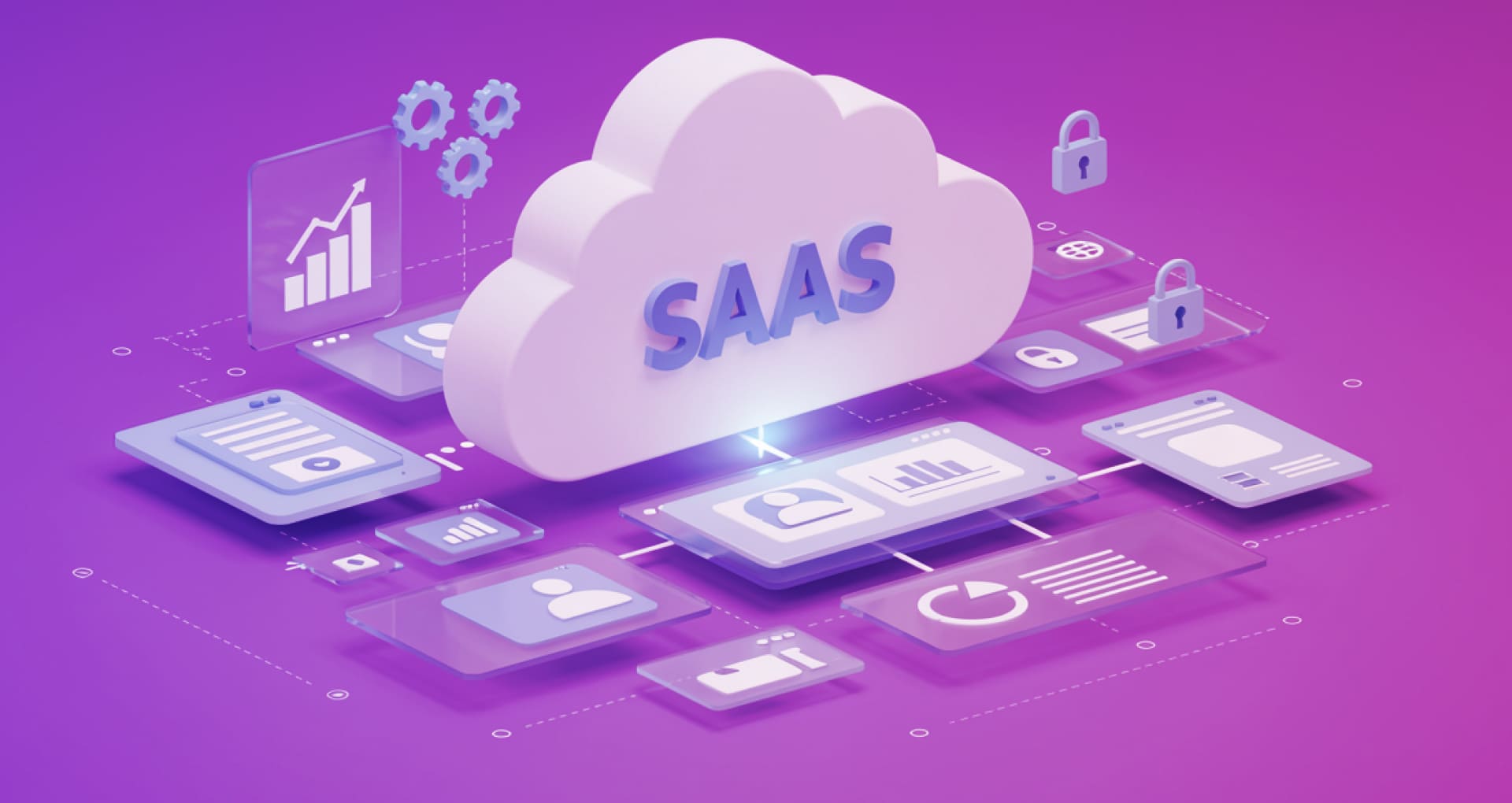
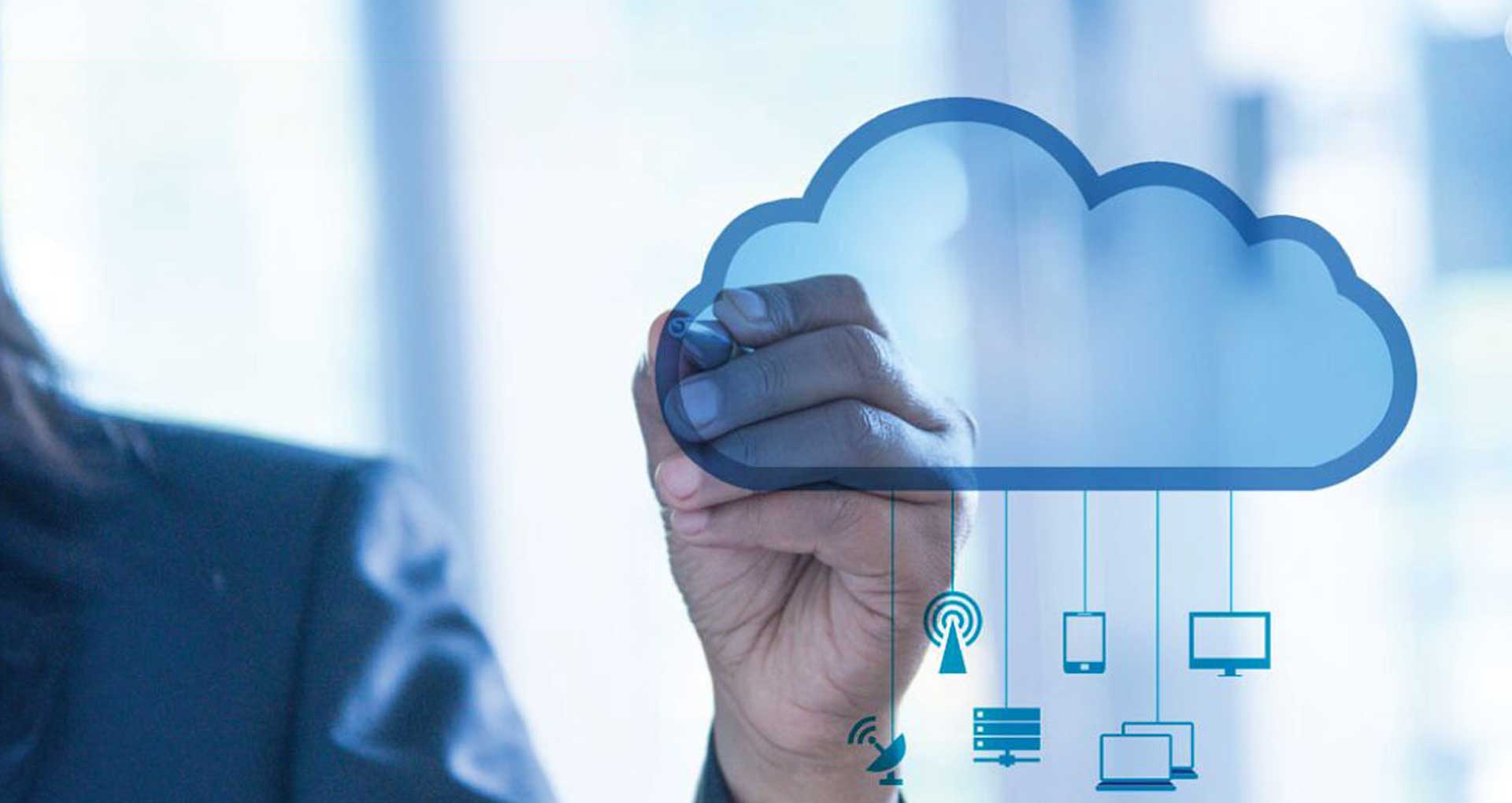
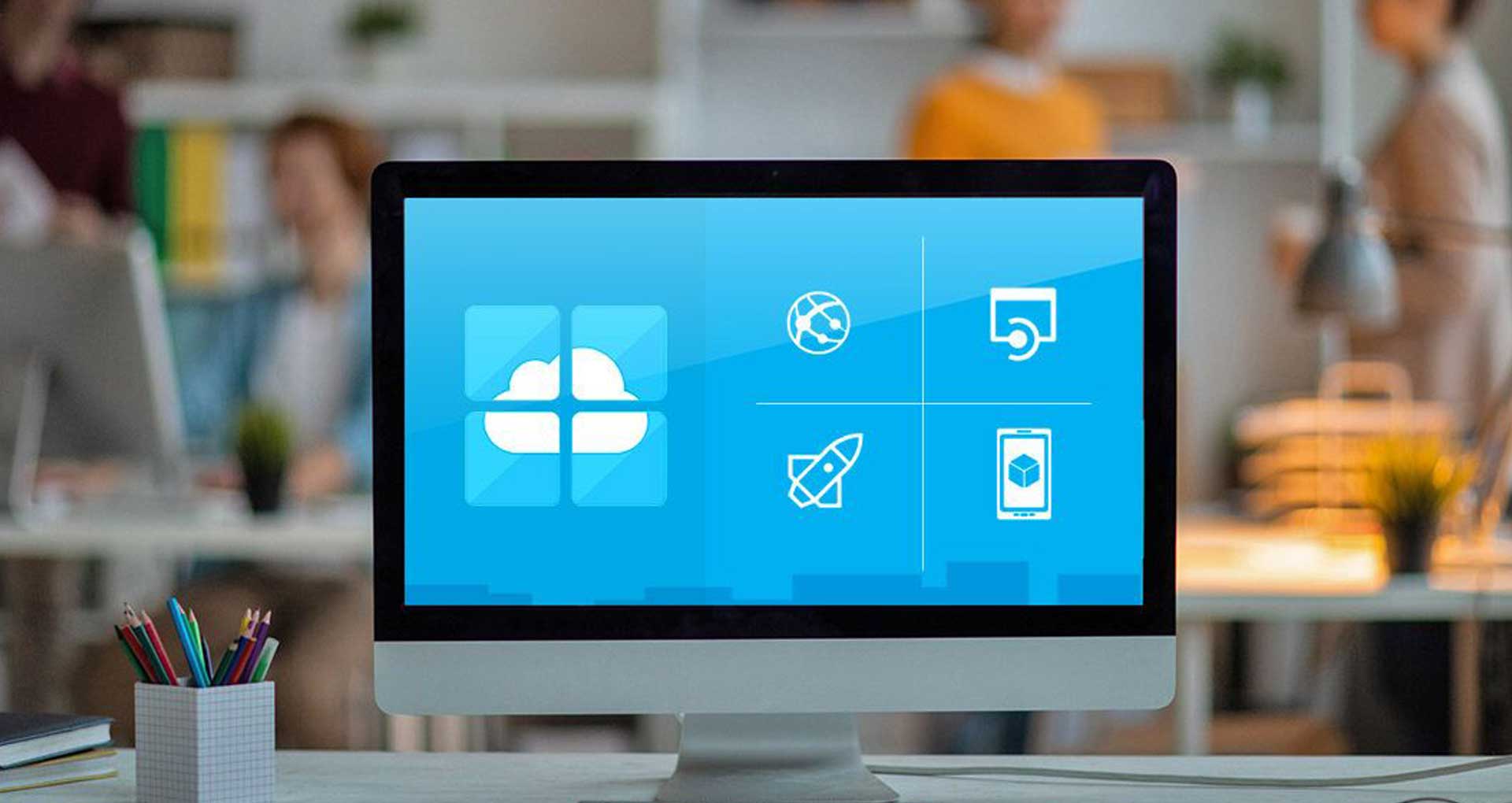
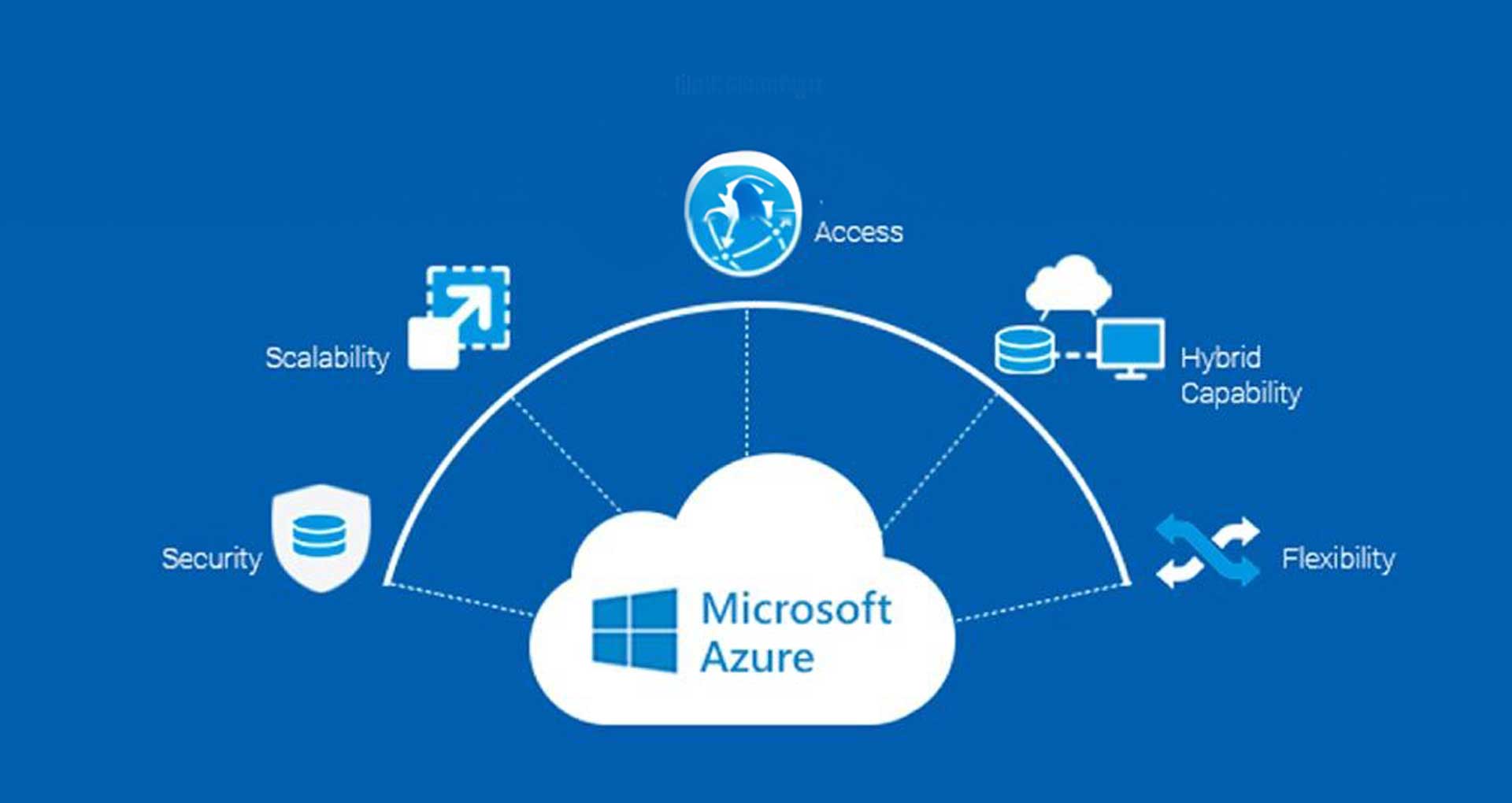
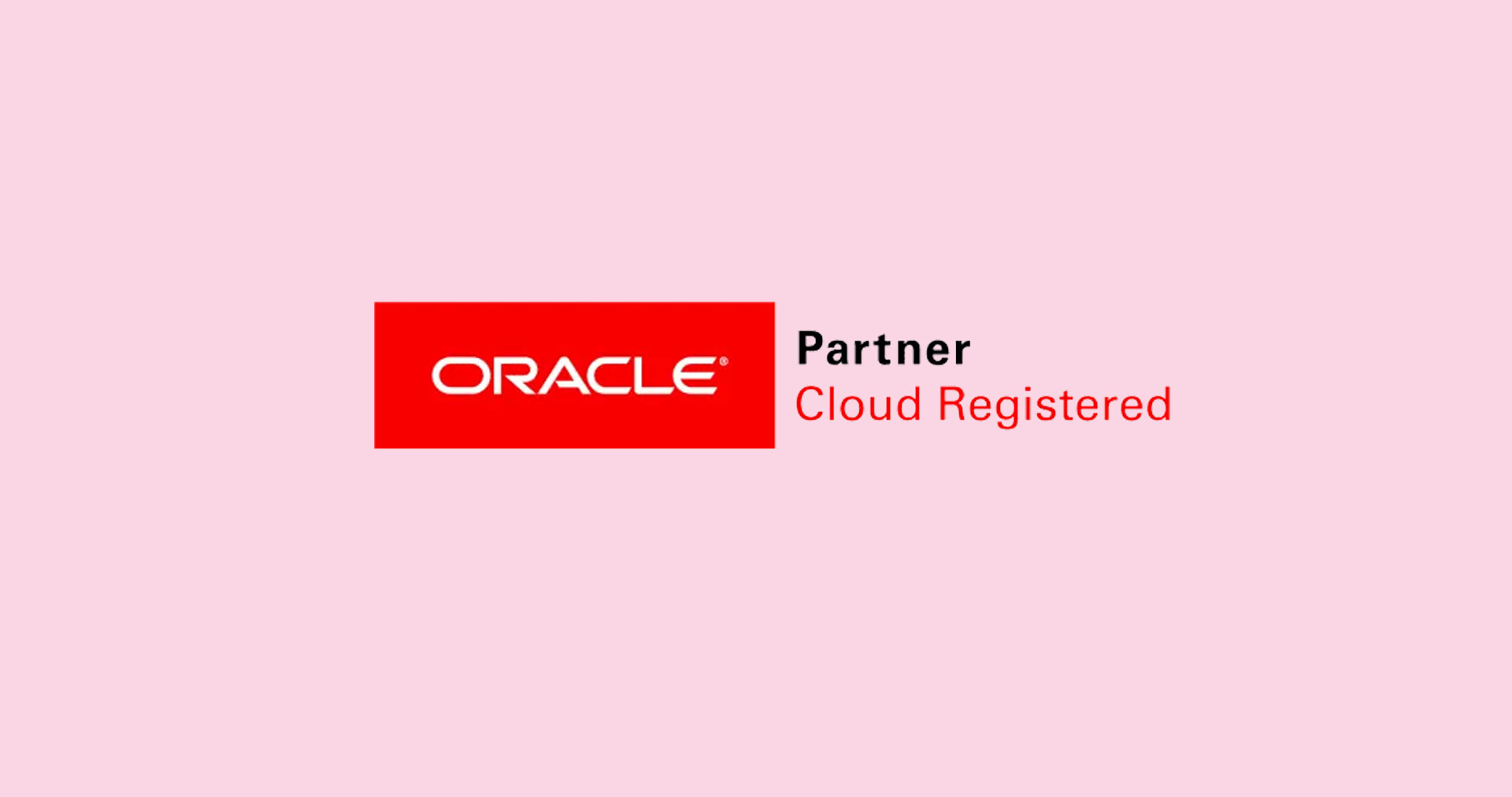

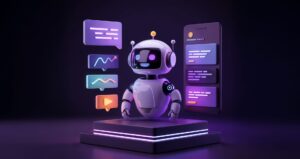




 30 Min
30 Min


